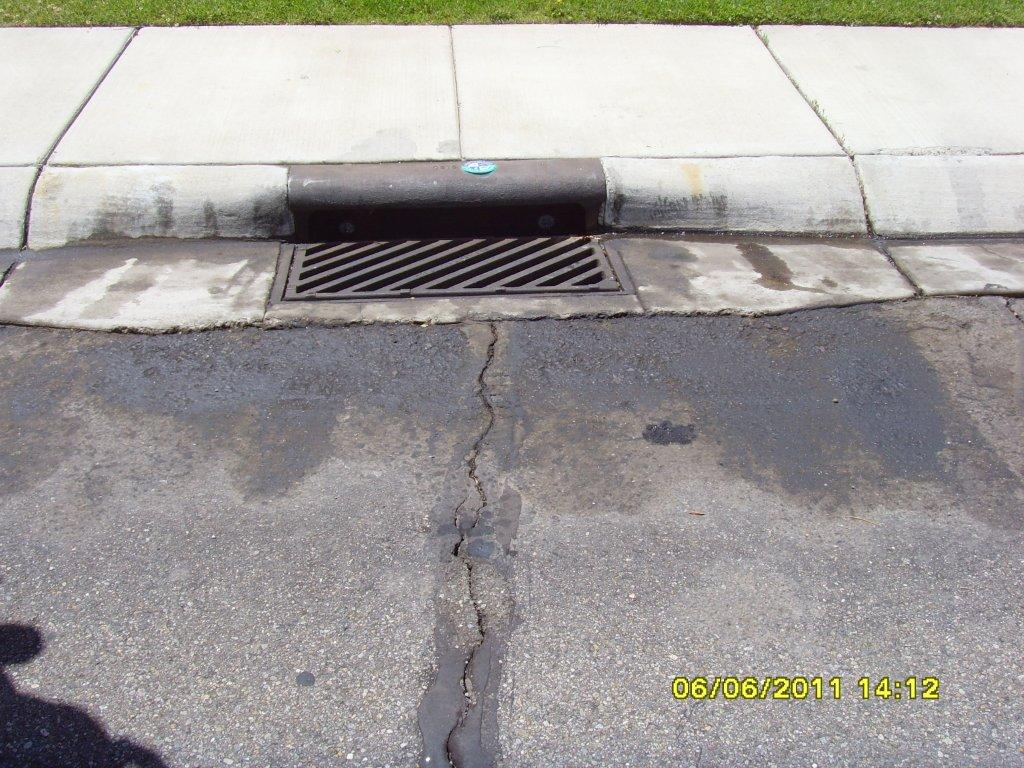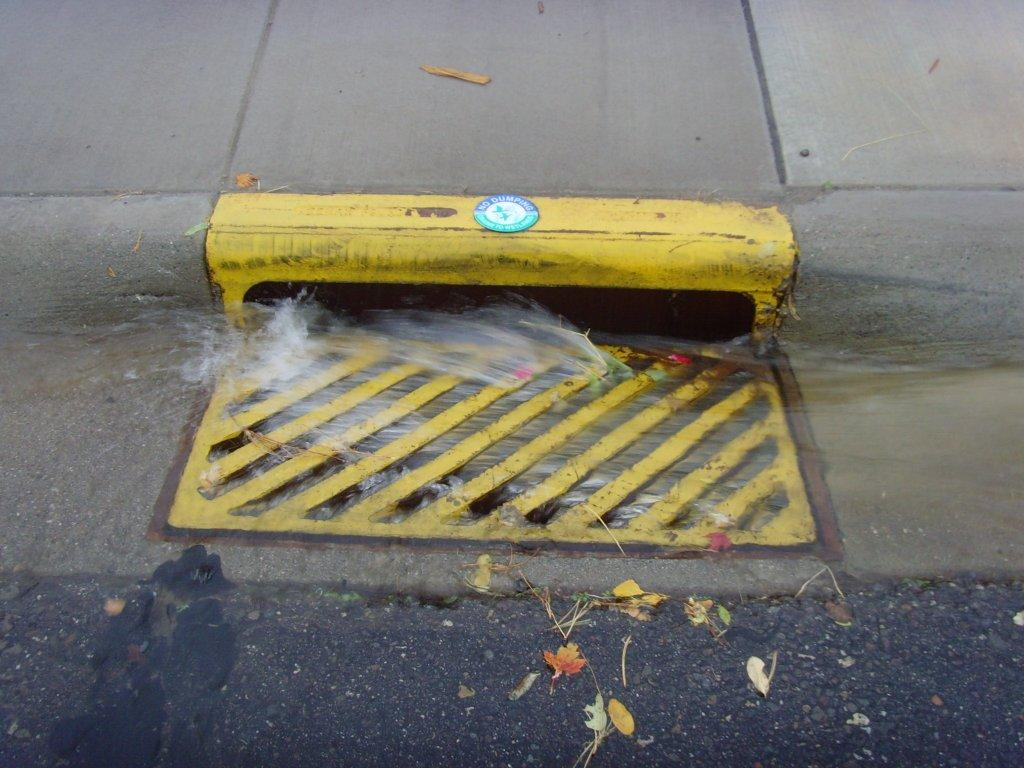Stormwater Management
National Pollutant Discharge Elimination System (NPDES)
Stormwater Program

NPDES Stormwater Program website contains technical and regulatory information about NPDES stormwater program. It is organized according to the three types of regulated stormwater discharges and provides a link to Stormwater Monthly outreach materials.The Carson Water Subconservancy District, or CWSD, is a unique multi-county, bi-state agency dedicated to establishing a balance between the needs of the communities within the Carson River Watershed and the function of the river system. Our thirteen member Board of Directors consists of representatives from each of the five counties within the watershed plus two representatives from the agricultural community. Granted no regulatory authority of its own, the CWSD’s mission is to work within existing governmental frameworks to promote cooperative action for the watershed that crosses both agency and political boundaries. The CWSD strives to involve all counties and communities within the watershed in the efforts to preserve the rich history and unique resources of the Carson River Watershed.


Stormwater runoff is precipitation from rain or snow melt that flows over the ground. As it flows, over driveways, lawns, and sidewalks, it can pick up debris, chemicals, dirt, and other pollutants and deposit them into a storm sewer system, or directly to a lake, stream, river, wetland, or coastal water. Anything that enters a storm sewer system is discharged untreated into the waterbodies we use for swimming, fishing and providing drinking water. Polluted runoff is the nation’s greatest threat to clean water.
Polluted stormwater runoff can have many adverse effects on plants, fish, animals, and people. Sediment can cloud the water and make it difficult or impossible for aquatic plants to grow. Sediment also can destroy aquatic habitats. Excess nutrients can cause algae blooms. When algae die, they sink to the bottom and decompose in a process that removes oxygen from the water. Fish and other aquatic organisms can’t exist in water with low dissolved oxygen levels. Bacteria and other pathogens can wash into swimming areas and create health hazards, often making beach closure necessary. Debris, plastic bags, six-pack rings, bottles and cigarette butts washed into waterbodies can choke, suffocate, or disable aquatic life lick ducks, fish, turtles, and birds. Household hazardous wastes like insecticides, pesticides, paint, solvents, used motor oil, and other auto fluids can poison aquatic life. Land animals and people can become sick or die from eating diseased fish and shellfish or ingesting polluted water. Polluted stormwater often affects drinking water sources. This, in turn, can affect human health and increase drinking water treatment costs.
Follow these simple guidelines to keep the stormwater leaving your household clean.
Stormwater runoff is precipitation from rain or snow melt that flows over the ground. As it flows, over driveways, lawns, and sidewalks, it can pick up debris, chemicals, dirt, and other pollutants and deposit them into a storm sewer system, or directly to a lake, stream, river, wetland, or coastal water. Anything that enters a storm sewer system is discharged untreated into the waterbodies we use for swimming, fishing and providing drinking water. Polluted runoff is the nation’s greatest threat to clean water.
Polluted stormwater runoff can have many adverse effects on plants, fish, animals, and people. Sediment can cloud the water and make it difficult or impossible for aquatic plants to grow. Sediment also can destroy aquatic habitats. Excess nutrients can cause algae blooms. When algae die, they sink to the bottom and decompose in a process that removes oxygen from the water. Fish and other aquatic organisms can’t exist in water with low dissolved oxygen levels. Bacteria and other pathogens can wash into swimming areas and create health hazards, often making beach closure necessary. Debris, plastic bags, six-pack rings, bottles and cigarette butts washed into waterbodies can choke, suffocate, or disable aquatic life lick ducks, fish, turtles, and birds. Household hazardous wastes like insecticides, pesticides, paint, solvents, used motor oil, and other auto fluids can poison aquatic life. Land animals and people can become sick or die from eating diseased fish and shellfish or ingesting polluted water. Polluted stormwater often affects drinking water sources. This, in turn, can affect human health and increase drinking water treatment costs.
Follow these simple guidelines to keep the stormwater leaving your household clean.
- Before beginning an outdoor project, locate the nearest storm drains and protect them from debris and other materials. Sweep up and properly dispose of construction debris such as concrete and mortar.U se hazardous substances like paints, solvents, and cleaners in the smallest amounts possible, and follow the directions on the label. Clean up spills immediately, and dispose of the waste safely. Store substances properly to avoid leaks and spills. Purchase and use nontoxic, biodegradable, recycled and recycled products whenever possible. Clean paint brushes in a sink, not outdoors. Filter and reuse paint thinner when using oil-based paints.
- Reduce the amount of paved area and increase the amount of vegetated area in your yard. Use native plants in your landscaping to reduce the need for watering during dry periods. Consider directing downspouts away from paved surfaces onto lawns and other measures to increase infiltration and reduce polluted run off.
- Water from swimming pools, spas or decorative fountains must be dechlorinated or debrominated prior to discharge to the street, storm drain, detention basins or sanitary sewer. Suggested methods are:
- Allow the pool water to sit in the pool without adding chlorine.
- Chlorine levels will drop naturally over several days.
- Add a dechlorinizing agent to the pool water. A common chemical used for this purpose is sodium thiosulphate. Different products are available in the market to accomplish this action.
- Using a pool test kit, check the residual chlorine lever prior to discharging. Discharge water when residual chlorine measures zero.
- Allow the pool water to sit in the pool without adding chlorine.
- Even seemingly small concentrations of chlorine can harm aquatic life. Chlorine can be very toxic to fish, small crustaceans and plankton. The U.S. Environmental Protection Agency acknowledges that at 1mg/L or less chlorine has a high acute toxicity to aquatic organisms.
- It is against District Policy and Federal Law to discharge chlorinated water without first reducing chlorine acceptable levels (less than 0.1mg/L)
- In order to prevent hydraulic overload of the sanitary sewer, pool water may not be discharged to the storm drain or sanitary sewer within one to two days after the cessation of a rain event.
- Pool, spa or fountain water containing copper-based algaecides may not be discharged to the storm drain or sanitary sewer.
- Maintenance discharges from swimming pools, fountains and spas such as filter backwash, acid wash, and plaster wasted shall never be discharged to a storm drain system.
- When walking your pet, remember to pick up the waste and dispose of it properly. Flushing pet waste is the best disposal method. Leaving pet waste on the ground increases public health, health risks by allowing harmful bacteria and nutrients to wash into the storm drain and eventually into local waterbodies.
For more information or to report a spill please visit the Nevada Division of Environmental Protection, Bureau of Corrective Actions website directly at http://www.ndep.nv.gov/bca/spil_rpt.htm
On a routine basis, District staff performs preventative maintenance on catch basins and storm water detention areas. Stormwater systems are inspected to uncover cracks, leaks and other conditions that could cause breakdowns or failures of storm water mitigation structures and equipment which in turn could result in discharges of chemicals to surface water either by direct overland flow or through storm drainage systems. Without adequate maintenance, sediment and debris can quickly clog storm drainage facilities and render them useless. If you should happen to notice a problem with any street storm drains or catch basins, please contact the District’s main office at (775) 267-2805.
For more information or to report a spill please visit the Nevada Division of Environmental Protection, Bureau of Corrective Actions website directly at http://www.ndep.nv.gov/bca/spil_rpt.htm
On a routine basis, District staff performs preventative maintenance on catch basins and storm water detention areas. Stormwater systems are inspected to uncover cracks, leaks and other conditions that could cause breakdowns or failures of storm water mitigation structures and equipment which in turn could result in discharges of chemicals to surface water either by direct overland flow or through storm drainage systems. Without adequate maintenance, sediment and debris can quickly clog storm drainage facilities and render them useless. If you should happen to notice a problem with any street storm drains or catch basins, please contact the District’s main office at (775) 267-2805.
The District appreciates your efforts to keep pollutants out of our local waterbodies.
Information from www.epa.gov/npdes/stormwater
